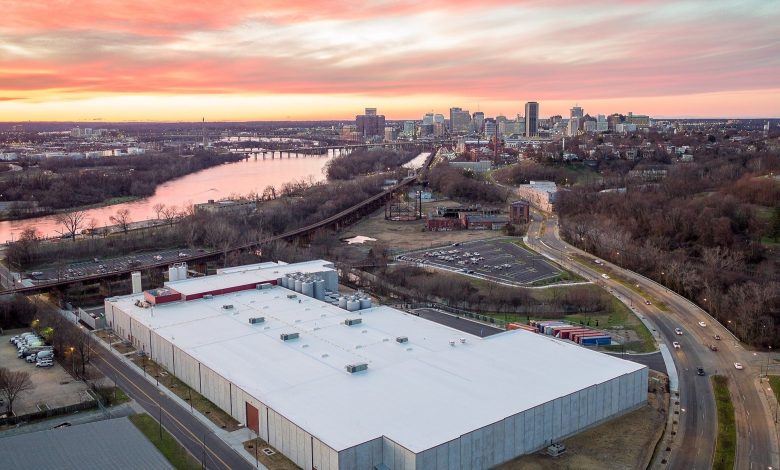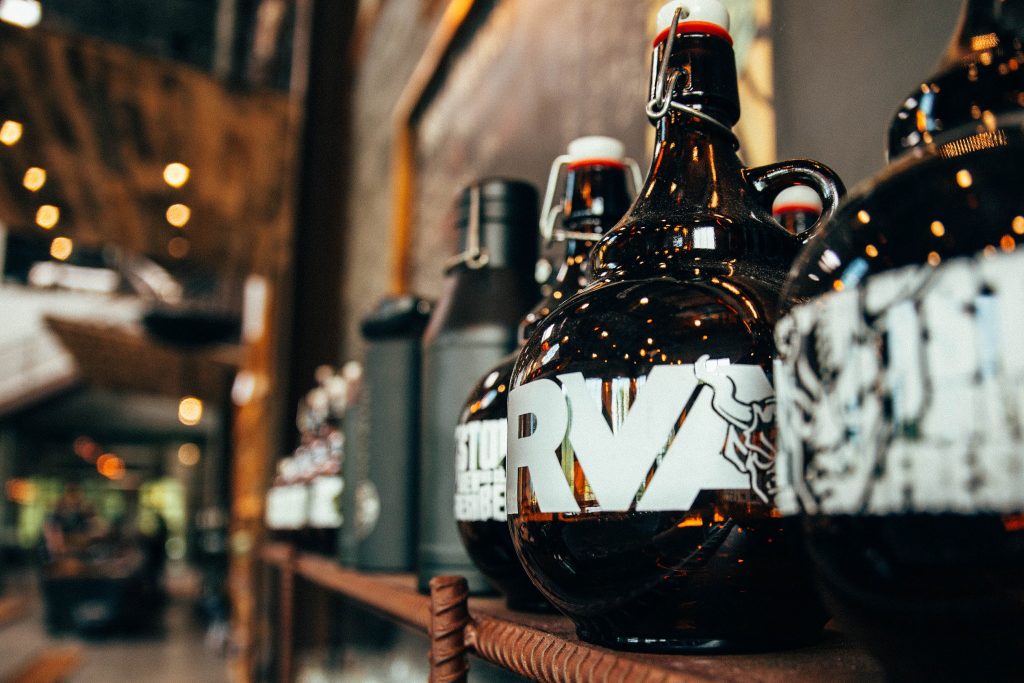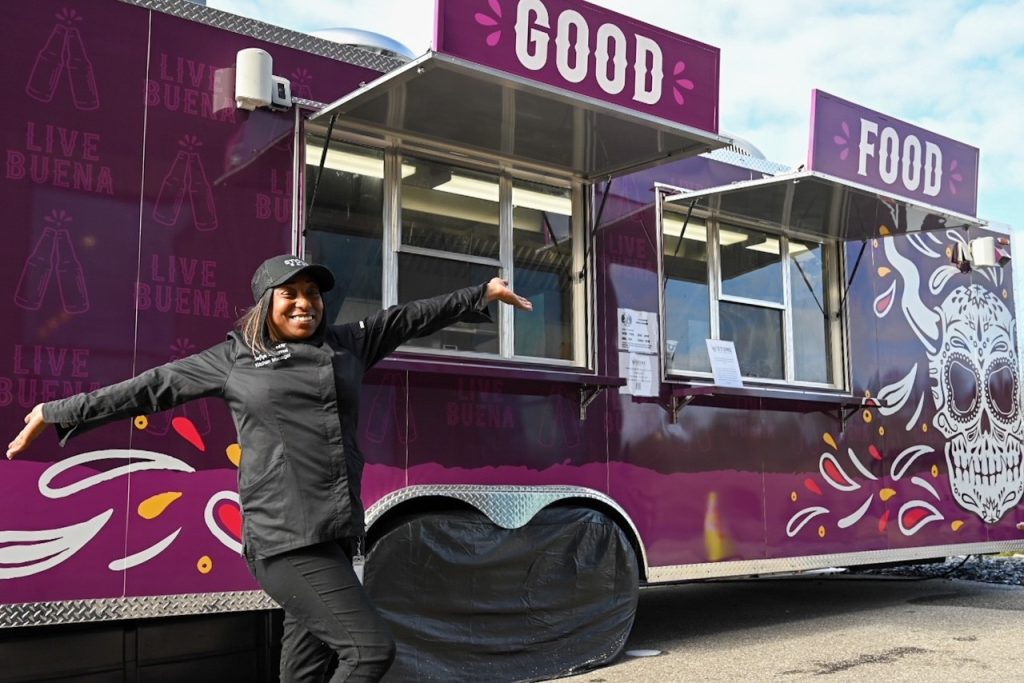
In 2016, Stone Brewing became a bi-coastal beermaking operation by building a 200,000-square-foot manufacturing facility in Richmond, Virginia. The primary aim of this bold, cost- and labor-intensive initiative was to be able to produce beers for accounts east of the Rockies. To accomplish that, Stone installed a 250-barrel brewhouse and a cellar allowing for annual production of 150,000 barrels. The tank farm was expanded in December of 2017, and this month it will welcome a pair each of 1,000-barrel Krones fermenters and bright tanks. This will raise Stone Brewing – RVA’s maximum production capacity to 200,000 barrels of beer per year.
In its first 12 months of operation, Stone Brewing – RVA produced more than 77,000 barrels of beer. By 2017, the Richmond location surpassed 100,000 barrels, and last year that facility churned out more than 136,000 barrels. “We’re approaching capacity and, given we have the space, we don’t ever want to be in a position of being unable to produce more beer because we don’t have the tanks for it,” says Stone Vice President of Brewing Operations Joel Grosser.
“We have plans to not only build out more points of distribution on our beers but also have expanded our capabilities to seltzer and other new product introductions,” adds Stone CEO Maria Stipp. “Given our innovation plans as well as our project growth initiatives, and also knowing some of the time delays in overall supply chain, we thought it would be wise to get the flexibility in our brewery that more tanks can offer early this year.”
The aforementioned tanks aren’t the only additions for the company’s East Coast base. Next month, the 10-barrel pilot system and corresponding tanks that were formerly housed at Stone Brewing – Napa (which closed last October after more than three years in operation) will be installed at the Richmond facility. While it is much smaller in size than the massive machinery it will share space with, it figures to play a major role at its new digs, providing Stone Brewing – RVA’s brewing team the opportunity to spread their wings beyond production brewing and apply their energy to small-batch recipe formulation for the first time.
“When we closed our Napa location, we immediately knew that pilot system had a home in Richmond. We have an incredibly talented and creative team out there and we’re excited to get them this new system for innovation,” says Grosser. “We also have a lot of locals that regularly visit the tap room and we’re eager to get them some really localized beers that will be exclusive to RVA.”
In addition to providing increased variety at the locations in which they are housed, Stone’s pilot-brewing setups have yielded award-winning beers like the three-time Great American Beer Festival medal-garnering (two golds, one bronze) Witty Moron black Belgian-style witbier and a silver-medalist American stout dubbed Cimmerian Portal, both of which were conceived at Point Loma’s Stone Brewing World Bistro & Gardens – Liberty Station.
Going beyond bragging rights, a number of Stone’s small-batch beers have proven enough of a hit to be elevated into core and seasonal offerings. Examples include a fruited Berliner-style weisse called Stone Notorious P.O.G. (passionfruit, orange, guava) from Liberty Station and Stone Viking Space Probe Hazy Double IPA, which originated in Napa. In fact, the company’s third best-selling beer, Stone Buenaveza Salt & Lime Lager, traces its roots back to Liberty Station, while its sister line of Buenavida Hard Seltzers were devised on the pilot system at Stone’s Escondido headquarters.
“Visitors to Stone Brewing – RVA have always had access to fresh beer brewed on-site, and the brewing team has flexed their creativity by using those base beers as a base for unique offerings that are aged in barrels with special ingredients and exclusive to Stone Brewing Tap Room – RVA,” says Stone Director of Communications Lizzie Younkin. “The addition of the small-batch brewing system, however, will allow for an entirely new channel of innovation at Stone. The RVA brewing team can now experiment with new recipes on-site and release unique on-off beers that are too complex or experimental for the big system. This means more variety and creativity for beer-drinkers to enjoy.”

Even without an R&D brewhouse, Stone RVA has contributed to Stone’s portfolio with the 2018 addition Stone ///Fear.Movie.Lions Hazy Double IPA. Named for the What3words set of coordinates tracing back to Stone RVA (a square is painted on the exact spot on the brewery floor), it is nationally distributed, the company’s highest-selling beer packaged in 16-ounce cans, and fourth largest brand overall by depletions.
“We absolutely could not produce the volume of beer we produce without Stone Brewing – RVA, so it’s an incredibly important connection to our global fanbase,” says Grosser, who notes that the Richmond location services accounts in Europe following the 2019 closure of Stone’s brewing facility in Berlin, Germany. “At full capacity, RVA could produce three times the volume we produce in Escondido, so it enables us to grow as we’re ready.”
Expanding the company’s reach—giving it a presence a nation away from its San Diego County birthplace—was another key motivator for Stone. And not just in terms of brand-recognition or aesthetic. Knowledge of certain aspects of the company—its culinary operations and efforts to give back to the community—was limited mostly to its San Diego County clientele previous to the East Coast expansion.
Since settling in Richmond, Stone has raised over a quarter-million dollars for more than 60 local organizations through donated beer, proceeds from sales of Stone beers, auction items, events and other means. That includes more than a dozen organizations based in the East End. Local government envisioned Stone would play a key role in that area’s revitalization when it signed on to build in the Greater Fulton neighborhood. Since arriving, the company has supported a number of initiatives such as the Gillies Creek Greenway connection to the riverfront and Virginia Capital Trail. Stone also collaborates with Richmond breweries much as it has on the West Coast, and established an annual beer and music festival, Stone’s Throw Down in RVA, in 2017, raising money for entities such as the James River Association, Neighborhood Resource Center and Venture Richmond.

On-site food has been more complicated for the company, which had originally planned to open a Stone Brewing World Bistro & Gardens location in a multi-level building along the James River, but the building proved to be in such disrepair that it was deemed inviable for the project. In January, Stone debuted a “Live Buena” food trailer sited outside of the Richmond tap room. Operated by Stone Brewing – RVA Kitchen Manager Safiya Cortorreal, it offers Southern California-inspired cuisine (chicken tinga nachos, jackfruit carnitas tacos) in tandem with Stone Buenaveza Salt & Lime Lager and the Stone Buenavida Hard Seltzers, while providing a platform for beer-and-food pairings.
While everything hasn’t gone exactly to plan, Stone Brewing – RVA has become a linchpin for the company and a solid East Coast base of operations; one that continues to grow and has room to keep doing so.

